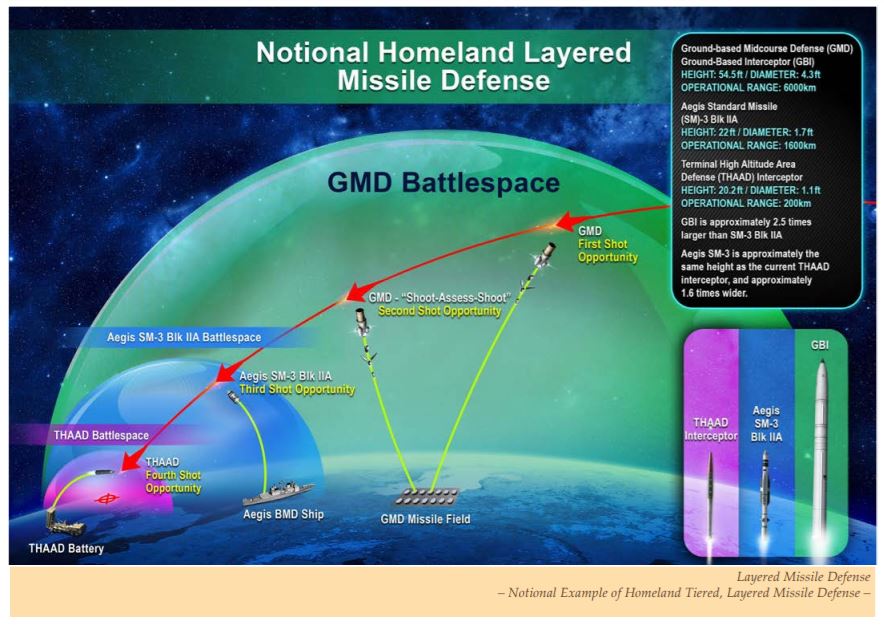This morning the Missile Defense Agency announced a successful intercept test of the Aegis Ballistic Missile Defense system against an “ICBM target.” What does this mean? https://www.mda.mil/news/20news0003.html
In short, it was a demonstration test to show this regional missile defense system, designed to engage short to intermediate-range missiles, can also target ICBM-range missiles when using its upgraded interceptors. Put that way, it seems like an incremental technical achievement.
But that’s not the main story. Plans call for deploying hundreds of these new interceptors
on mobile, globally-deployable Aegis BMD ships. The dramatic expansion of strategic defense cannot escape the notice of Russia and China.
on mobile, globally-deployable Aegis BMD ships. The dramatic expansion of strategic defense cannot escape the notice of Russia and China.
It is likely to have a crushing effect on prospects for new nuclear arms control agreements and will also provide motivation (or justification) for Russia and China to diversify and grow their nuclear weapons arsenals. https://ucsusa.org/resources/sm-3-block-iia-interceptor
This is especially of concern to China, as the credibility of China’s retaliatory capability rests mainly on its relatively small mobile ICBM force, around 48 missiles. ( @nukestrat @mattkorda) https://doi.org/10.1080/00963402.2019.1628511
Even though the Aegis BMD system’s actual defensive capability is severely limited by its vulnerability to decoys and other midcourse countermeasures, the numbers are worrisome.
As a regional defense it is designed to intercept short- to intermed-range ballistic missiles. When properly cued by sensors, the system’s SM-3 Block IA & IB interceptors can defend areas measured in hundreds of km, areas too small to provide practicable defense of the entire US.
The SM-3 Block IIA’s greater speed permits covering larger geographic areas (if cued by sensors.) Intercept attempts against ICBMs as they descend toward US territory would require basing the Block IIA interceptors on ships positioned off US coasts, and possibly an inland site.
George Lewis in his Mostly Missile Defense blog keeps close track of all this: https://mostlymissiledefense.com/2018/06/05/update-on-aegis-sm-3-block-iia-against-icbms-june-5-2018/
Congress in the FY18 NDAA mandated a test to provide the proof of concept that the Aegis BMD system, using the new SM-3 IIA interceptors, could engage an ICBM-range missile, even though they were not designed to. The test was mandated to happen by the end of 2020. (Here we are.)
In the same defense bill, Congress also required a report from the SecDef about whether such a demonstration “poses any risks to strategic stability” and if so, to develop a plan to mitigate those risks. Haven’t seen this report nor evidence this discussion got any traction.
Because the current US homeland defense, the Ground-Based Midcourse System, has struggled to overcome reliability problems, the Trump administration in its FY21 budget has included the Aegis system as part of its scheme for a layered homeland defense. https://www.mda.mil/global/documents/pdf/budgetfy21.pdf
Noting the difference between this enormously costly and technically sophisticated plan to defend the homeland against a few North Korean missiles and the absolutely inadequate response to the COVID-19 threat that is currently ravaging the US.
250,000 friends, family members, community members, elders, culture bearers lost. And counting.
Thanks to @Marco_Langbroek for an early heads up and thoughtful analysis. Follow him, you won't regret it!
To add to this epically long thread, post-election hiatus, a paper I wrote almost ten years ago. Yes, the SM-3 IIA will be an issue for space security, as well. https://fas.org/pubs/pir/2011winter/2011Winter-Anti-Satellite.pdf

 Read on Twitter
Read on Twitter


